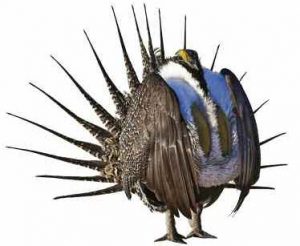 Pomona College’s mascot, the sagehen—the sage grouse in the real world—needs a “lek” up.
Pomona College’s mascot, the sagehen—the sage grouse in the real world—needs a “lek” up.
What’s Next For:
Revolutions?
Syria?
Mexico?
Japan?
The United States?
Earthquake Safety?
Climate Action?
California Water?
Climate Science?
Solar Energy?
California Fruit Farming?
Technology Investing?
Nanoscience?
Digital Storage?
Artificial Intelligence?
Cyber-Threats?
Social Media?
Space Exploration?
Science Museums?
The Sagehen?
Biodiversity?
The Blind?
Big Data?
Mental Illness?
Health Care Apps?
Maternity Care?
Etiquette?
Ballroom Dance?
Thrill Seekers?
Outdoor Recreation?
Funerals?
Writers?
Movies?
Manga?
Alt Rock?
Women in Mathematics?
A rare collaboration between conservation and energy interests came together to protect the sage grouse’s mating habitat—known as leks. But the U.S. Interior Department led by Secretary Ryan Zinke is now re-examining the plan in order to prioritize energy development, leading to an uncertain future for our beloved mascot.
Jessica Blickley ’02, an ecologist at Pasadena City College, studied the sage grouse as a graduate student at UC Davis and lays out the history, present and potential future of Cecil’s brethren.
Historically, the sage grouse’s habitat spanned the western United States, but as grazing land overtook wild land, as invasive grasses crept over native sagebrush, as wildfires grew in ferocity and frequency, and as natural gas, oil and wind developments popped up, the sage grouse’s domain has shrunk. And with shrinking domains, explains Blickley, there’s less space for the sage grouse to puff up their chests and attract mates. That means shrinking populations.
That’s why, a few years ago, a diverse group of concerned stakeholders, from state governments to private landowners, came together to craft a large-scale sage grouse conservation plan focused on protecting the bird’s natural habitat. In 2015, this multi-state effort led the U.S. Fish and Wildlife Service to keep the sage grouse off the Endangered Species Act (ESA), a decision the Audubon Society saw as a nod to the ongoing success of the plan.
“The conservation plan seemed to be working well until 2017 when Zinke decided he was going to put this conservation plan under review and change it,” says Blickley. “In addition, there is currently a bill in Congress that would specifically prevent future listing of the sage grouse under ESA. Due to these federal actions, the future of the sage grouse is much less certain than just a few years ago.”
But Blickley hasn’t lost hope. “My hope comes from the state level. In the state of Wyoming, where 40 percent of the sage grouse are found, the Republican governor believes strongly in the collaborative conservation plan, so hopefully many of the state level regulations will go into place.”
